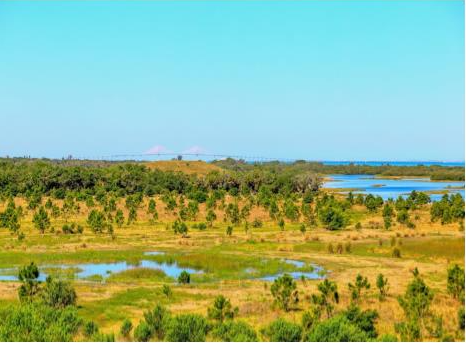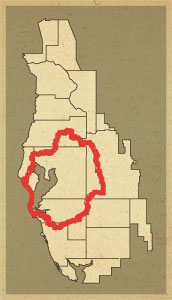
Highlights
- Designated an “Estuary of National Significance” in 1990
- Florida’s largest open-water estuary at 373 square miles
- Over 2.7 million residents in the watershed
- Includes portions of Hillsborough, Manatee and Pinellas counties
- 2,200-square-mile watershed
Goals
Water Quality Goals
- Update nutrient reduction goals for each bay segment using a revised seagrass-nutrient management paradigm.
- Propose new bay-segment specific seagrass light targets.
- Reduce nutrient loads through the implementation of cost-effective SWIM projects in cooperation with District partners.
Natural Systems Protection and Restoration Goals
- Support the District Seagrass Mapping Program and complete the Tampa Biennial seagrass maps.
- Support the establishment of a drift macroalgae monitoring network.
- Support the 2030 habitat protection and restoration targets outlined in the 2020 Tampa Bay Estuary Program Habitat Master Plan.

Strategies
Through cooperation with other government agencies, these challenges are met by:
- Developing and updating the Tampa Bay Estuary Program comprehensive conservation and management plan
- Implementing natural systems restoration projects consistent with the 2023 SWIM Plan
- Conducting research to reevaluate the link between seagrass coverage and nutrient loading,
- Implementing water quality improvement projects
Success Indicators
Successful project implementation is indicated by:
- Improved water quality
- Recovery of seagrass to 2020 levels
- Increased acreages of restored and enhanced natural systems in the watershed
Future goals are then developed through an adaptive management process, always striving to help restore Florida’s natural ecosystems.

